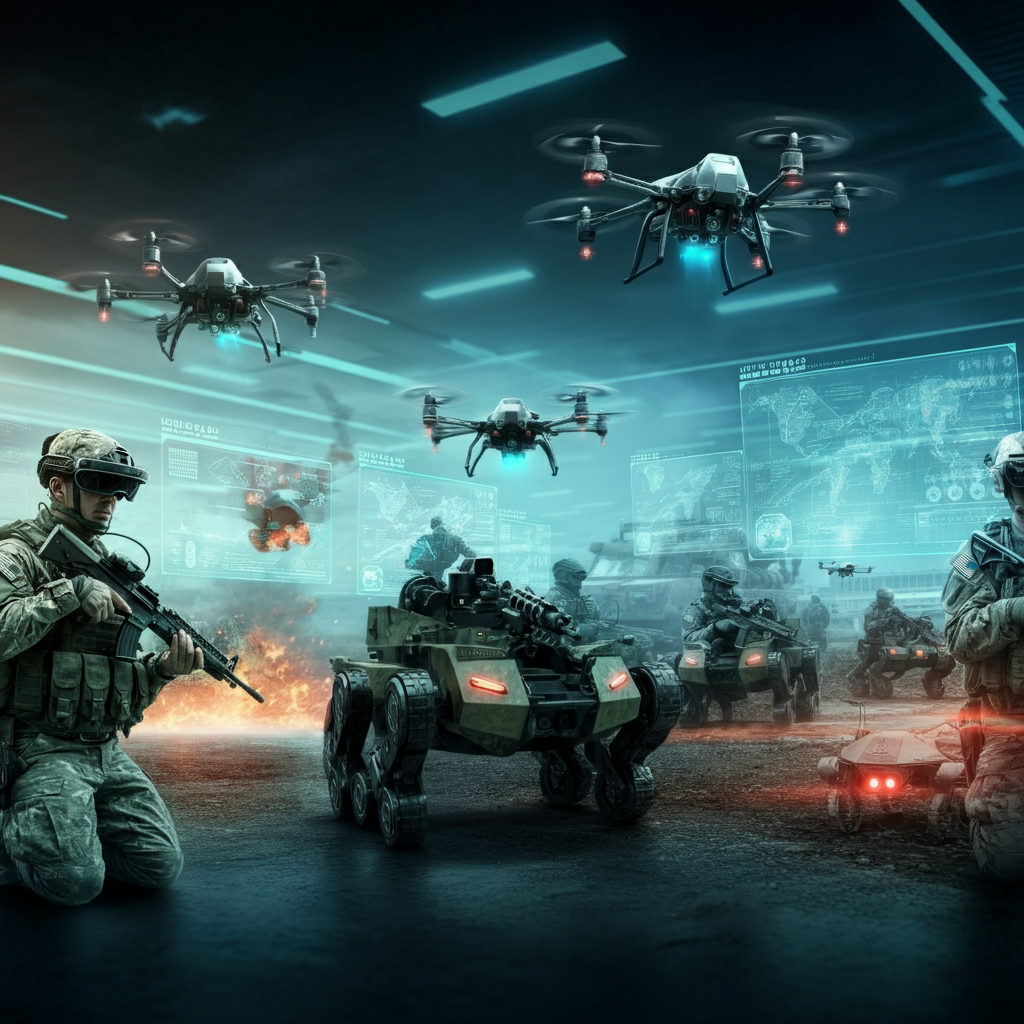Battlefield situational awareness (SA) – the understanding of the operational environment – is the cornerstone of effective military tactics. From ancient battlefields to modern theaters of war, commanders have strived to gain a clear picture of the terrain, enemy forces, and friendly positions to make informed decisions. Today, the integration of cutting-edge technologies like video streaming, AI acceleration, and autonomous remote platforms (ARPs) is revolutionizing how SA is achieved and how tactics are employed.
The Evolution of Situational Awareness:
Historically, SA relied on human observation, reconnaissance patrols, and intelligence gathering. Information was often fragmented, delayed, and subject to human error. Modern technology has dramatically changed this landscape. Sensors, satellites, and communication networks provide a constant stream of data, painting a far more comprehensive picture of the battlefield. Learn more about edge computing solutions for tactical situational awareness in the military.
The Role of Video Streaming and AI Acceleration:
Real-time video streaming from various sources, including drones, ground vehicles, and even individual soldiers, provides a dynamic and immediate view of the battlespace. However, the sheer volume of video data can be overwhelming. This is where AI acceleration comes into play. AI algorithms can process vast amounts of video in real-time to:
Identify and Classify Targets: AI can automatically detect and classify enemy vehicles, personnel, and other objects of interest, freeing up human analysts to focus on more complex tasks.
Analyze Enemy Movements: By tracking enemy movements over time, AI can identify patterns and predict future actions, enabling proactive tactical adjustments.
Create 3D Maps and Models: AI can stitch together video feeds from multiple sources to create detailed 3D maps and models of the terrain, providing valuable information for planning and navigation.
Assess Battle Damage: AI can analyze post-engagement video to assess the effectiveness of attacks and identify areas that require further attention.

Autonomous Remote Platforms (ARPs) and Tactical Innovation:
ARPs, including drones and robots, extend the reach of SA and enable new tactical possibilities. Equipped with high-resolution cameras and sensors, ARPs can:
Conduct Reconnaissance in Dangerous Areas: ARPs can be deployed to gather intelligence in areas that are too risky for human soldiers.
Provide Overwatch and Support: ARPs can provide real-time situational awareness to ground troops, enabling them to react quickly to threats.
Perform Targeted Strikes: Armed ARPs can be used to engage enemy targets with precision, minimizing collateral damage.
Coordinate Swarm Attacks: Groups of interconnected ARPs can be used to overwhelm enemy defenses and achieve tactical objectives.
The Impact on Military Tactics:
The integration of video streaming, AI acceleration, and ARPs is leading to significant changes in military tactics:
Distributed Operations: Smaller, more agile units can operate across a wider area, leveraging ARPs and networked sensors to maintain SA and coordinate their actions.
Asymmetric Warfare: ARPs can be used to counter the advantages of larger, more conventional forces, leveling the playing field.
Information Warfare: Real-time video and AI-driven analysis can be used to disseminate propaganda and influence enemy decision-making.
Rapid Decision-Making: The ability to process and analyze information quickly enables commanders to make faster and more informed decisions, gaining a crucial advantage.
Challenges and Future Directions:
While the benefits are clear, several challenges remain:
Data Overload: Managing and interpreting the vast amounts of data generated by these technologies can be overwhelming.
Cybersecurity: Protecting networks and systems from cyberattacks is crucial.
Ethical Considerations: The use of AI in warfare raises ethical questions that need to be addressed.
The future of battlefield SA will likely involve even greater integration of AI, ARPs, and other advanced technologies. We can expect to see:
More sophisticated AI algorithms: These algorithms will be able to perform more complex tasks, such as predicting enemy behavior and autonomously coordinating swarms of ARPs.
Improved human-machine teaming: Humans and AI will work together seamlessly, with AI providing decision support and humans retaining ultimate control.
Enhanced communication networks: More robust and secure communication networks will be needed to support the flow of data between different systems.
Battlefield situational awareness has entered a new era. The convergence of video streaming, AI acceleration, and autonomous remote platforms is transforming military tactics and the very nature of warfare. As these technologies continue to evolve, the ability to gain and maintain SA will be more critical than ever, determining victory or defeat on the battlefields of the future.